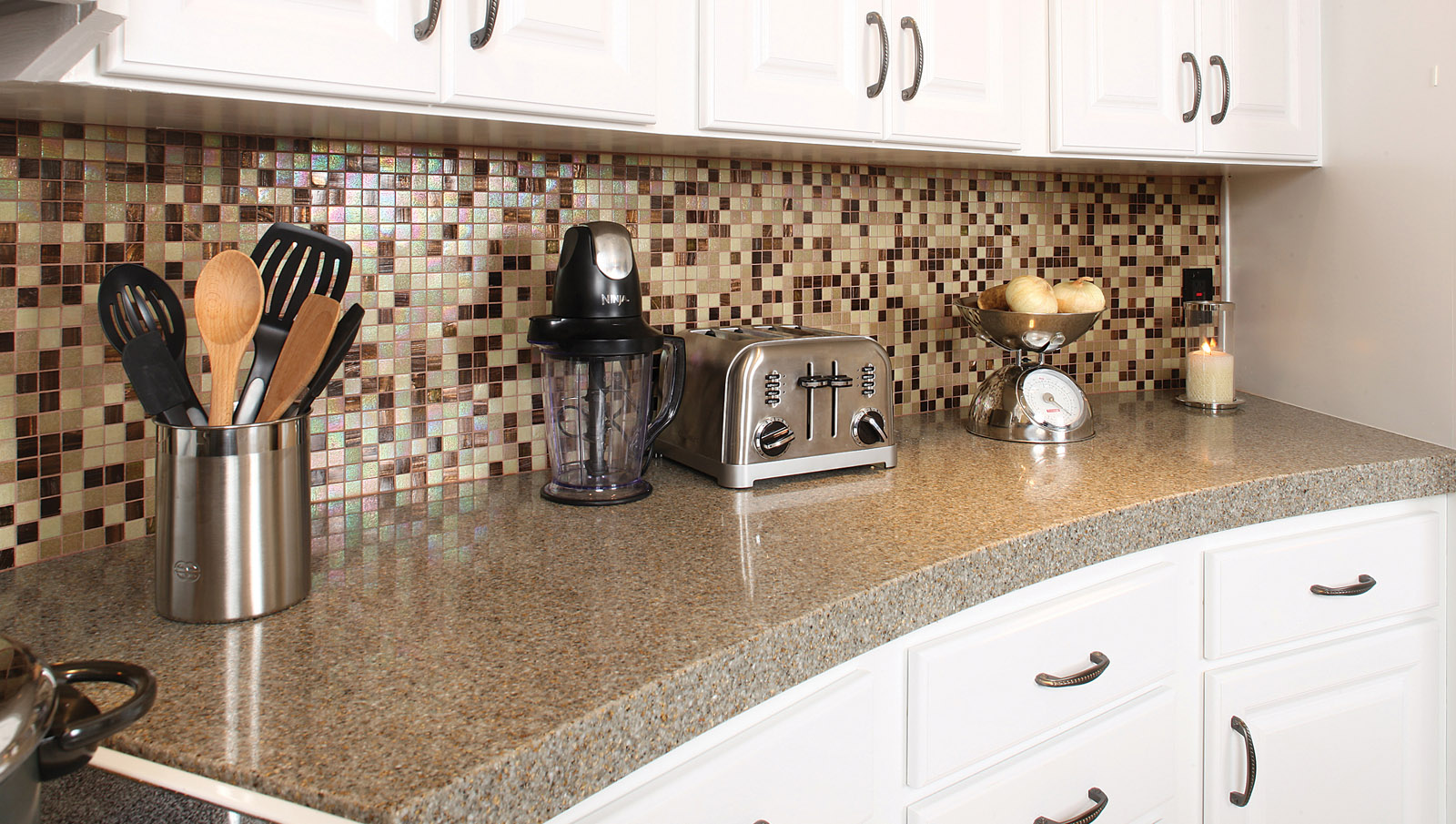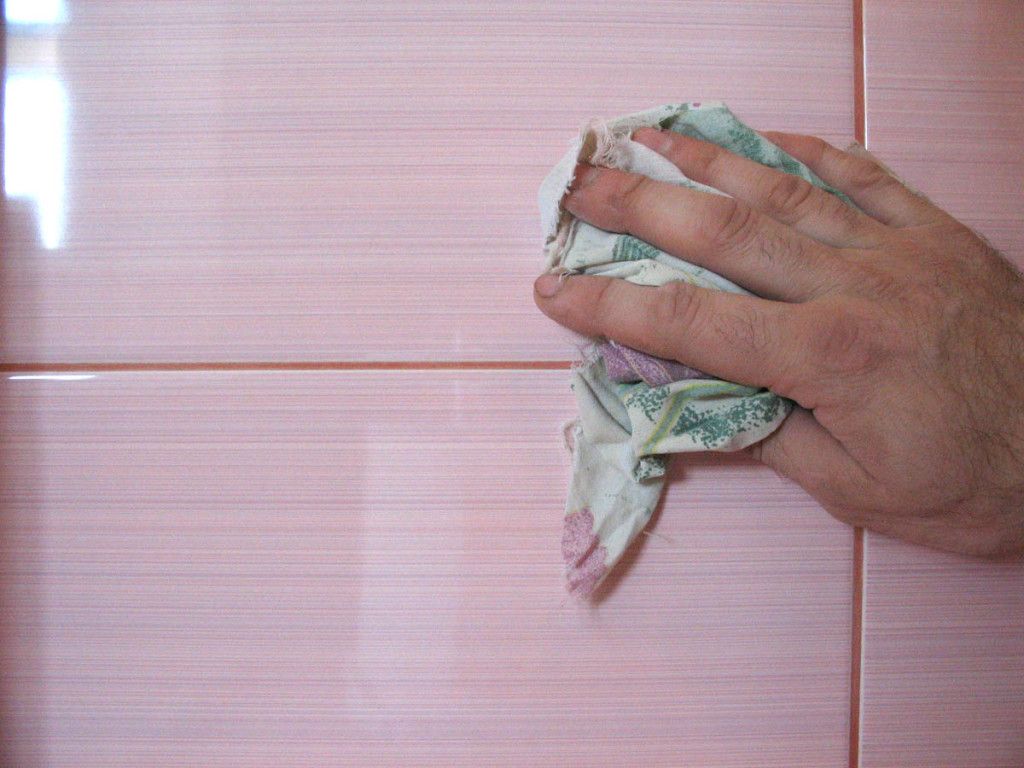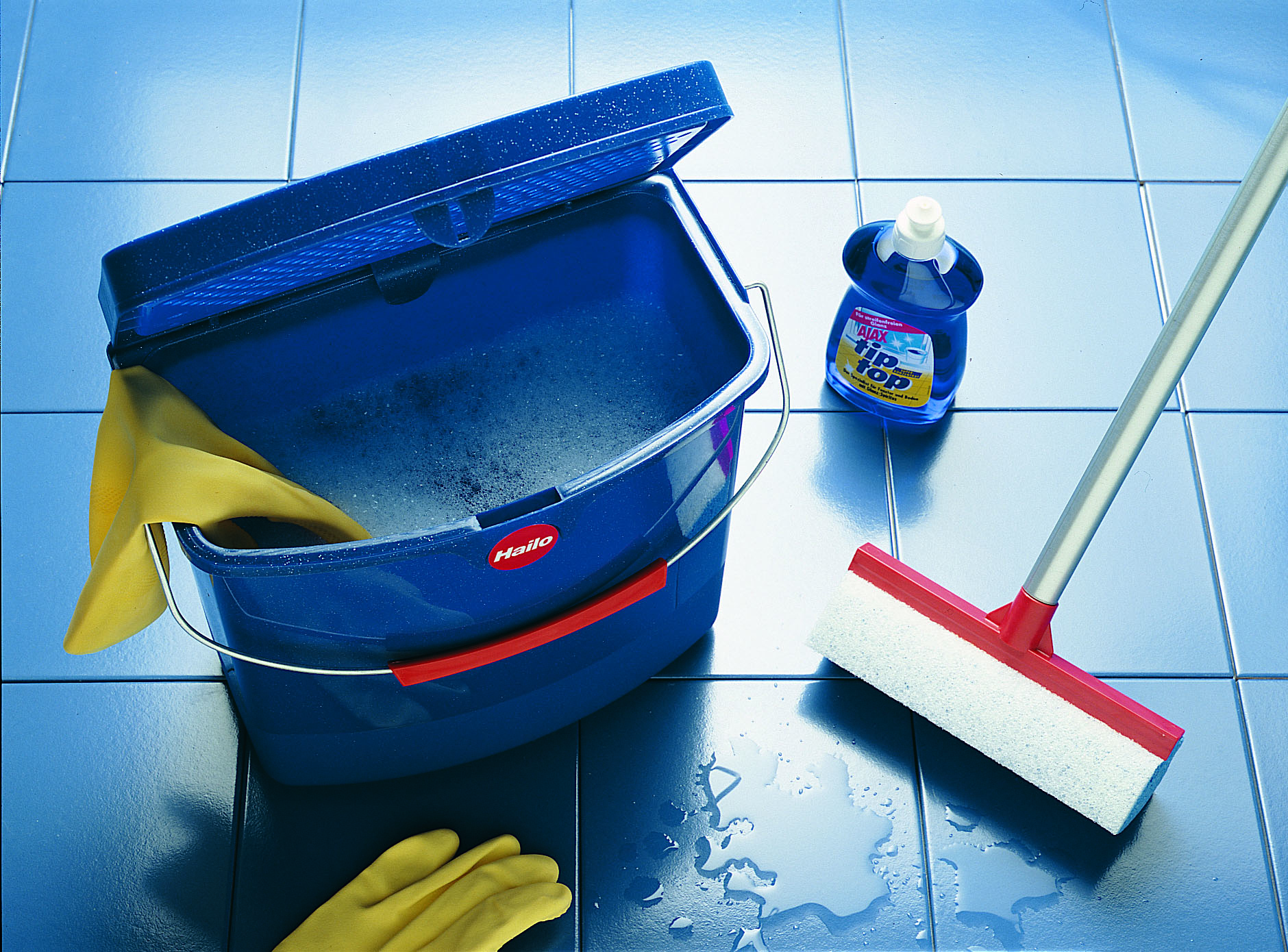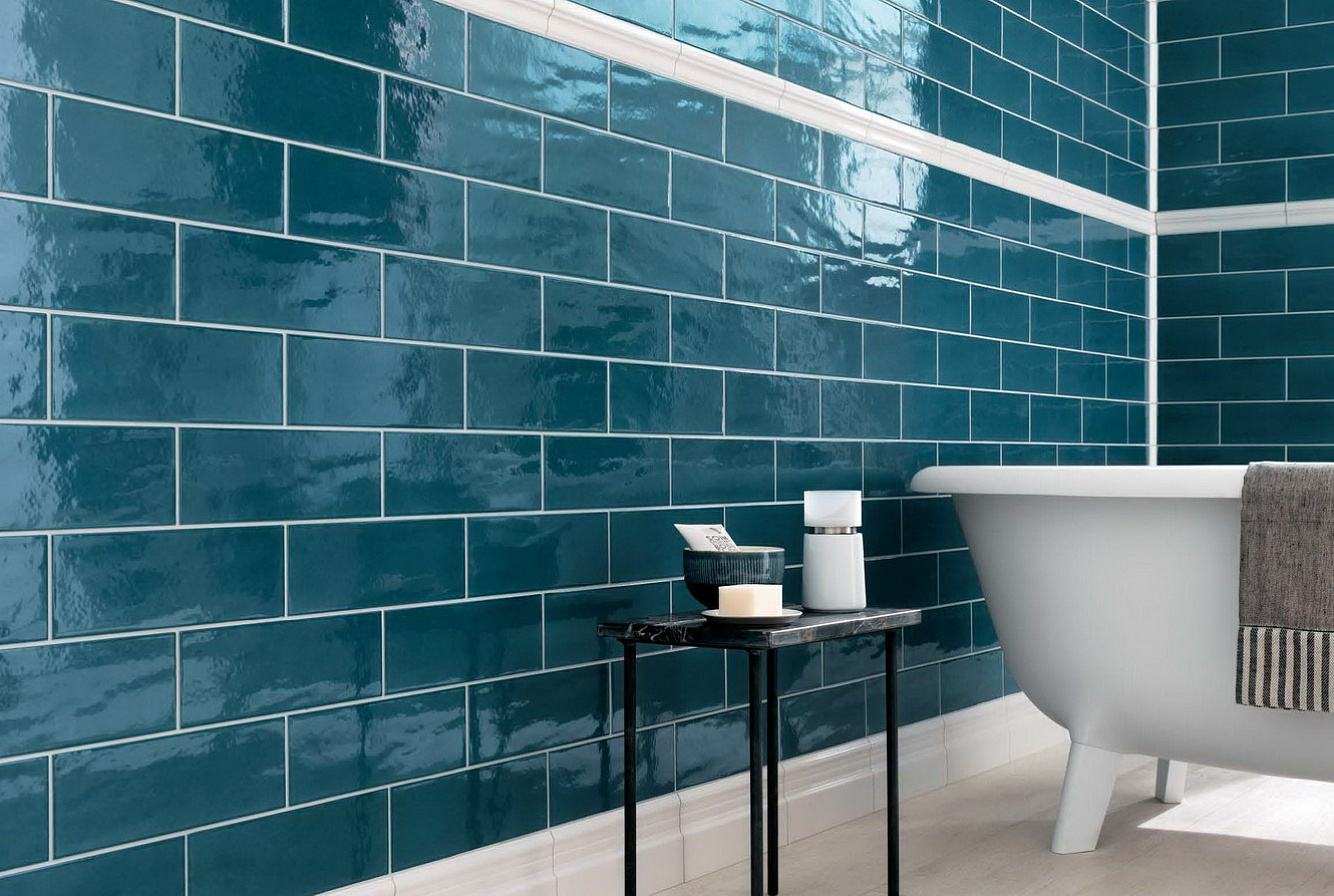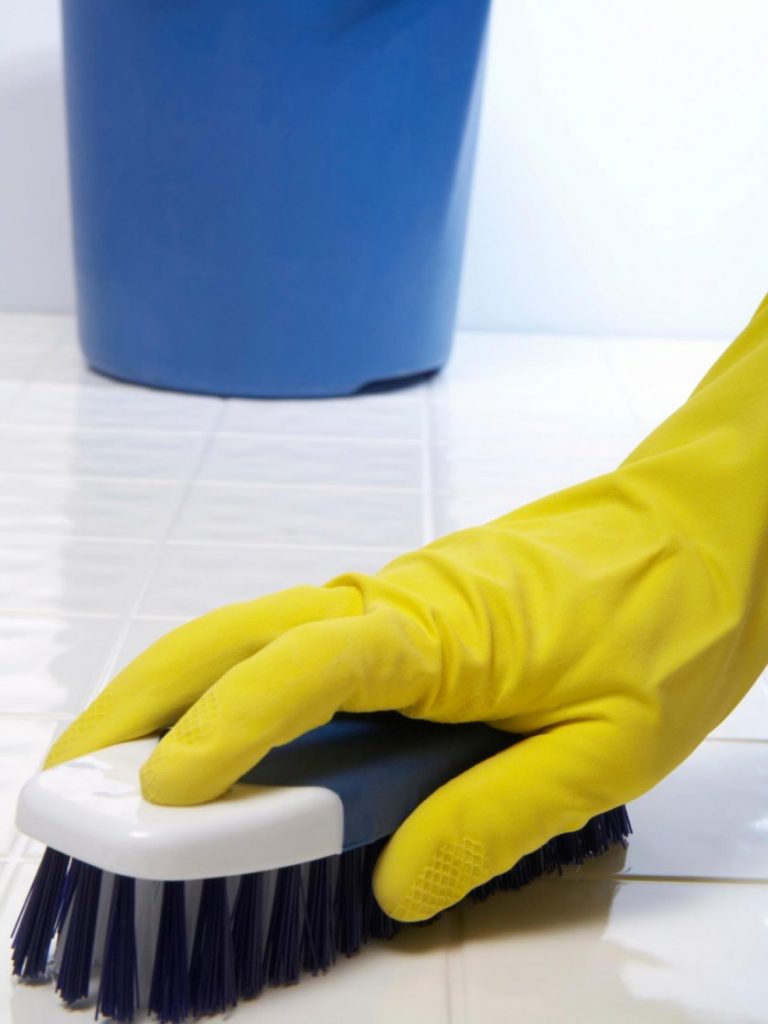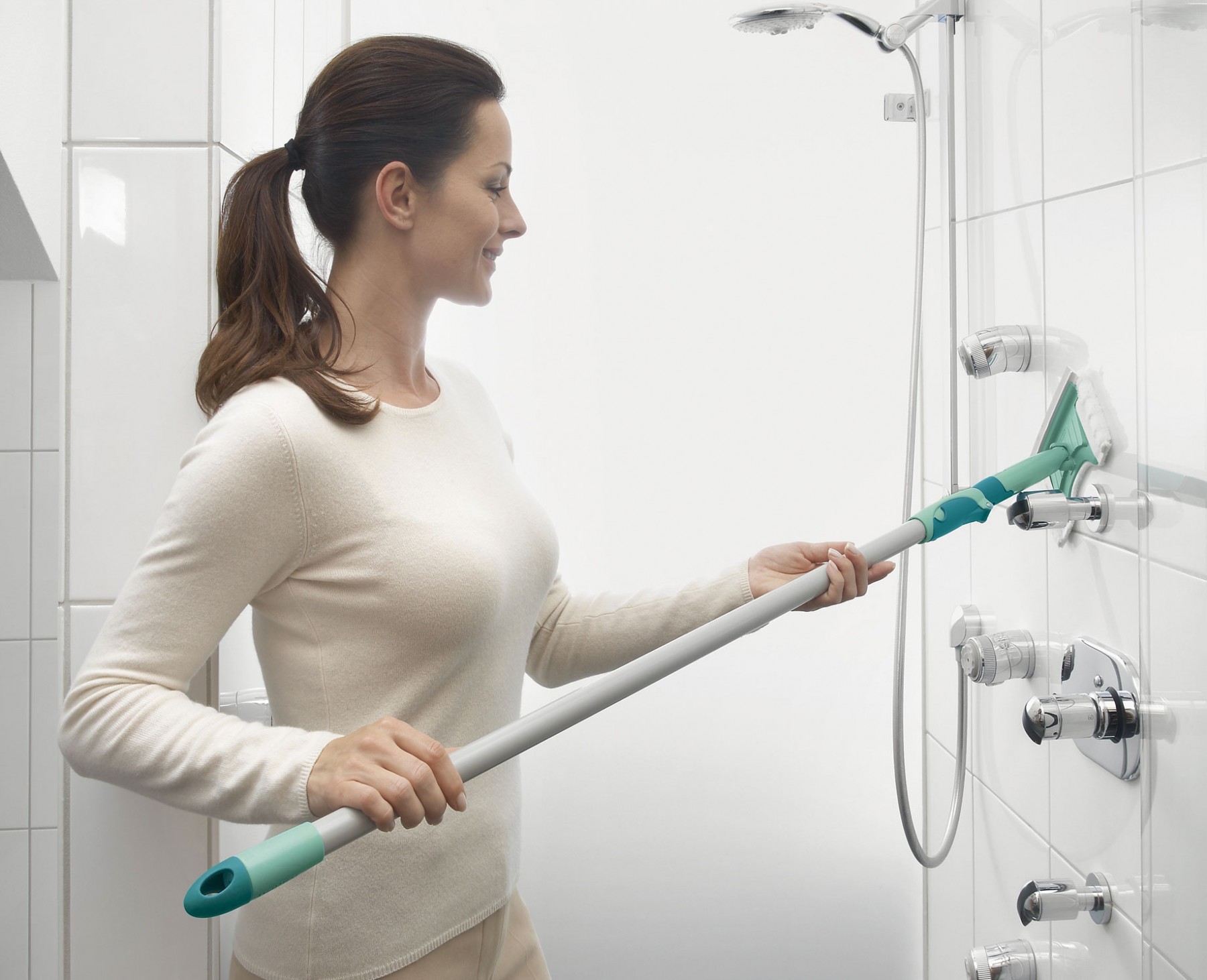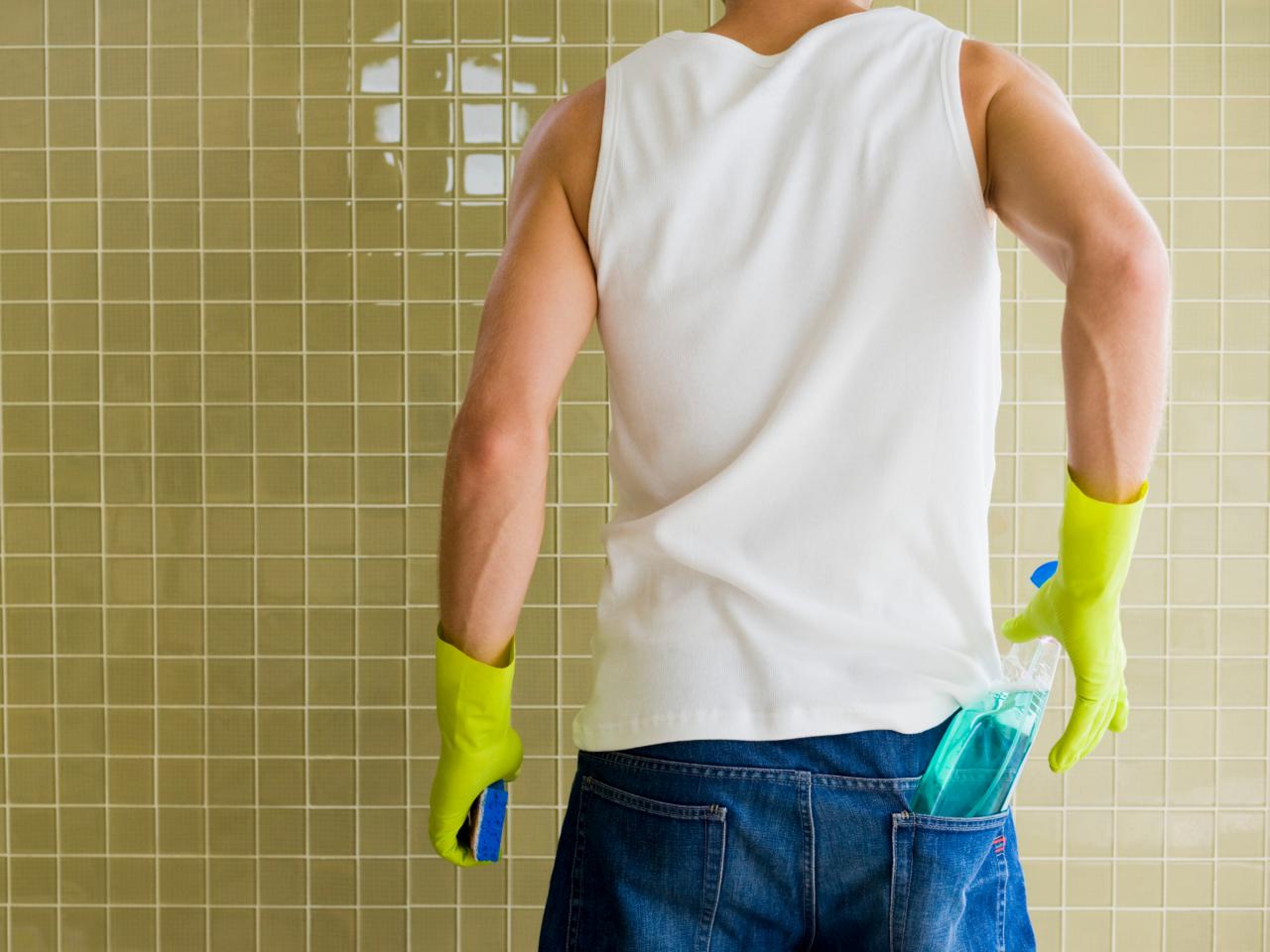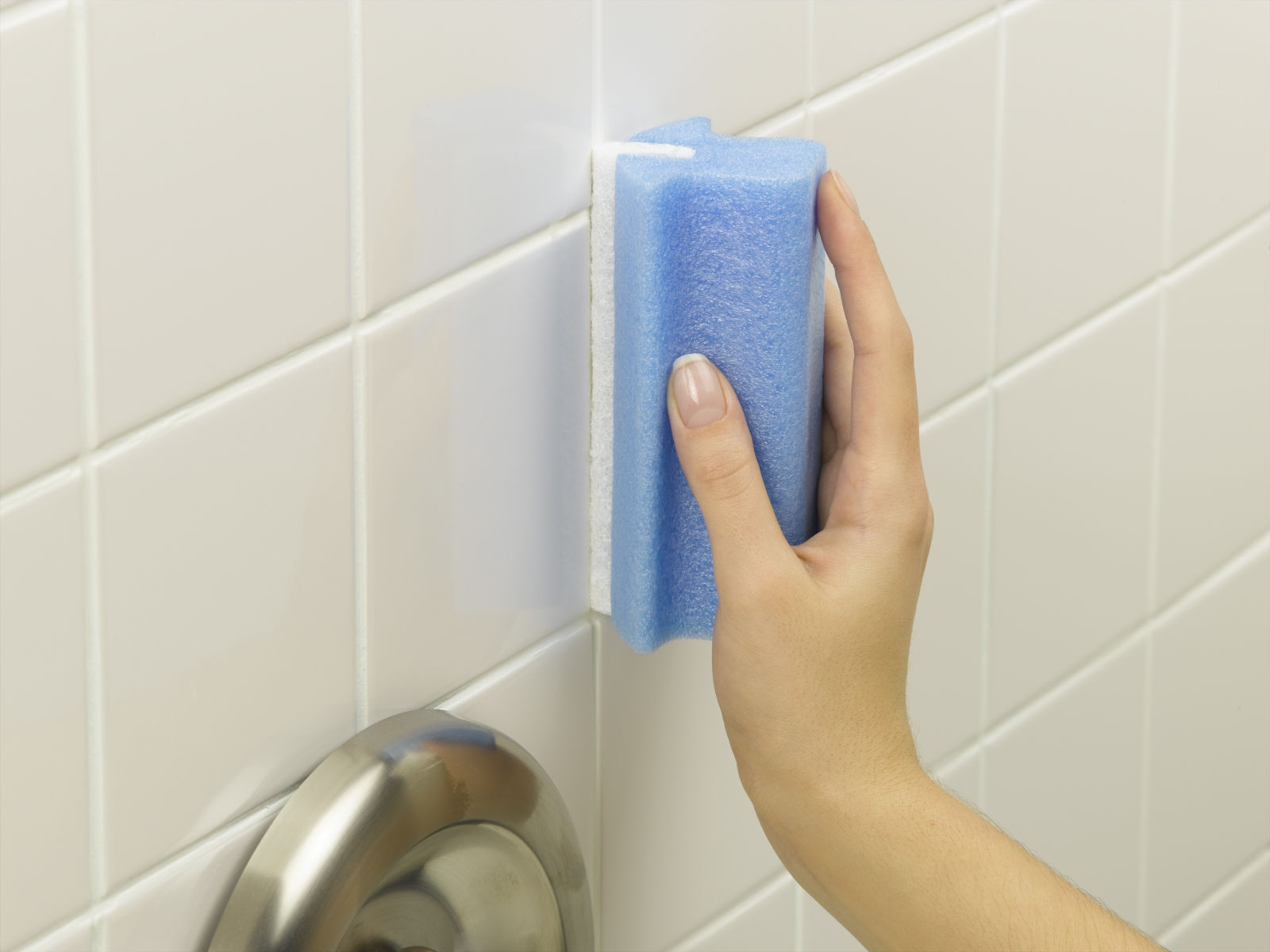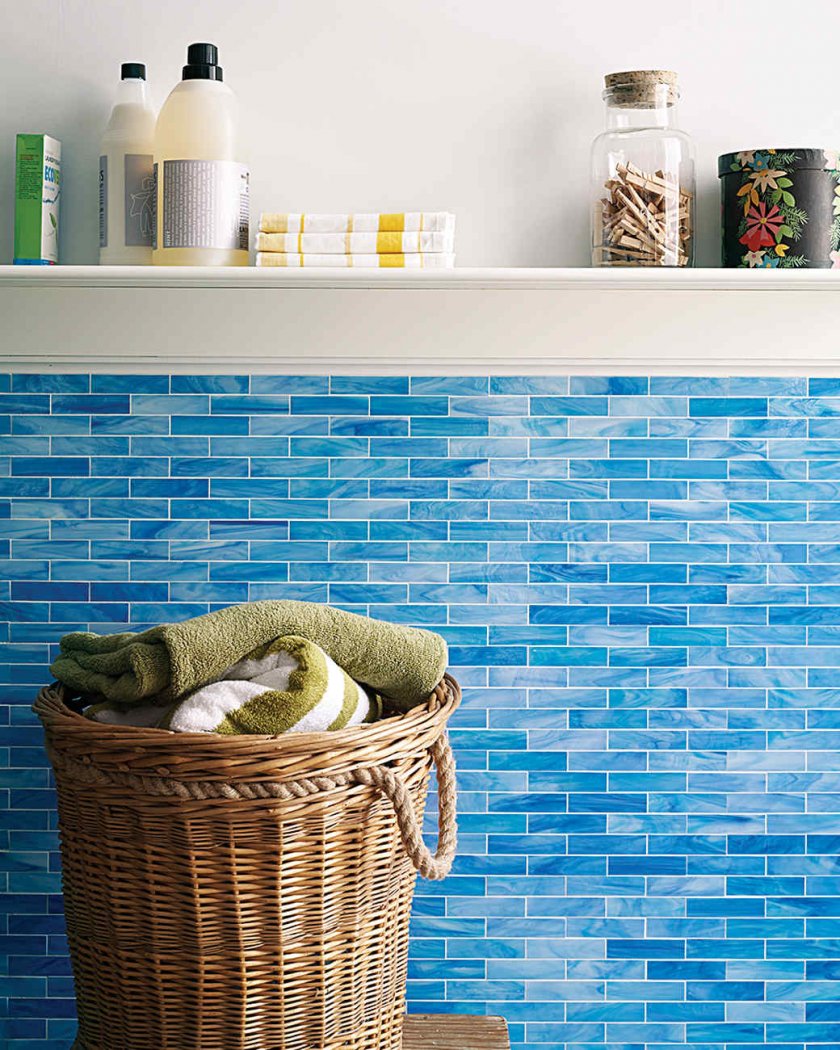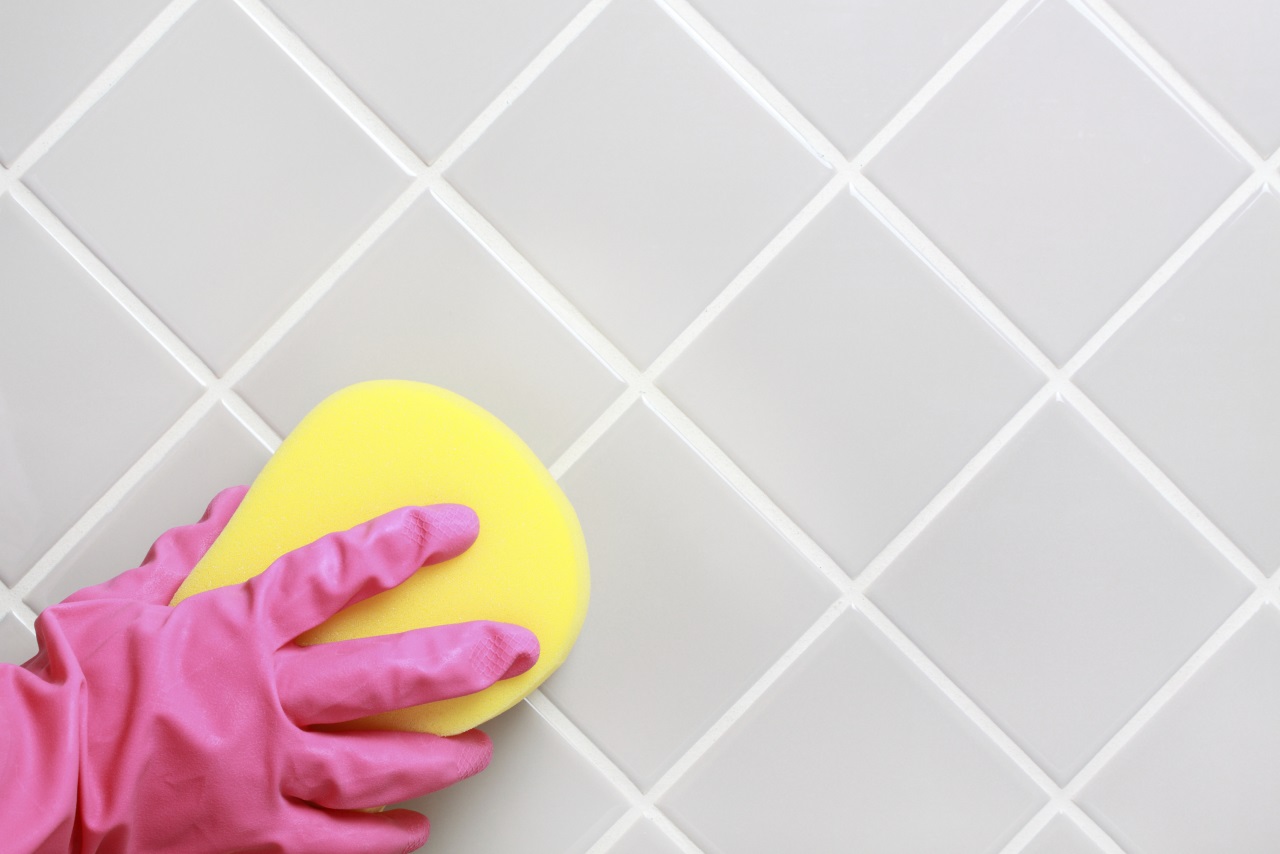How to wash a tile: from a banal lemon peel to a steam cleaner
Content
Stains on tiles in the kitchen and bathroom are common and inevitable. No matter how hard you try, but drops of fat and water fall on the tile. Of course, smudges are not so visible on the patterned tile, but stains on the grout and the stale surface are hard to miss. For high-quality cleaning, it is important to choose products that remove pollution and do not damage the surface.
Clean kitchen: how can you clean the tiles?
The problem of greasy stains in the kitchen is familiar to almost all housewives. If you finish every cooking with cleaning, then ideal cleanliness will not leave the room, but there is not always time to immediately clean up, especially to wash the tiles in the kitchen from grease. Sometimes drops of oil can get on the ceiling tile, and there should be options for washing the tile from fresh and old grease stains.
Recent contaminants are washed with regular soap or liquid dishwashing detergent. For dried stains, you can also apply these methods, you just have to clean the tile longer. You can try washing old fat with folk methods:
- a slice of lemon rub the pollution and leave for a while, then rinse;
- dirty areas are sprinkled with soda and moistened with vinegar, after the reaction you need to wash the tiles in the kitchen from fat.
The ceiling tiles can be washed with a steam cleaner. If the kitchen ceiling is decorated with foam tiles, then washing is carried out only with a soft sponge with detergents without abrasives (dry cleaning is preferable).
Wiping the joints of tiles with undiluted vinegar will prevent the occurrence of fungus and mold. A steam cleaner is a good option than washing the seams between the tiles.
The flooring also needs serious care. Sometimes the floor in the kitchen is lined with PVC tiles. To remove stains from a similar surface, liquid detergents without abrasives and sponges for dishes are used.
How to wash tiles in the bathroom?
It is not always possible to carefully cover the walls and protect the surface from splashes of paint, some chemical compounds. Sometimes it is possible to wash the tiles in the bathroom after the repair with a damp cloth and this takes a little time, but basically removing dirt creates a lot of trouble and makes you resort to different methods.
How to wash tiles in the bathroom after repair?
During repair work, various materials, mixtures, liquids are used. When laying tile, it is difficult to protect the coating from dirt. Which cleaning products to use depends on the type of dirt: tile adhesive, grout, primer, paint, cement.
Special compounds are sold to remove stains from many building materials. However, at home, you can successfully use folk remedies. When cleaning, it should be borne in mind that the surface of the relief tile is less cleanable than a smooth matte.
Glue from a tile in a fresh state is easily removed with a damp cloth and a rubber spatula.
If the stain is dried, then first you need to soften it with water with the addition of vinegar / ammonia. Polymer glue removes acetone (first, in the corner of the tile, you need to check the effect on the surface of the tile). The softened stain is cleaned off with the neat movements of a scraper, a hard sponge.
It is difficult to call the grout mixture contamination, so cleaning the surface can be called rather the final stage of laying tiles. The grout is usually wiped off immediately, as soon as the surface of the mixture begins to lighten. Before washing the grout from the tile, the entire surface is wetted with clean water. Soaked mastic is washed off like a whitewash.
There are several ways to clean the primer from the tile. The primer is a highly binding solution which, after drying, is difficult to remove, therefore it is better to cover the area near the work area with newspapers / film. To remove stains, the same primer is often used. The stain is slightly moistened with the composition and wiped with a clean, damp sponge. If the tile has a porous structure, then completely remove pollution will be problematic. Alternatively, the contaminants are cleaned with chemicals: acetone, white spirit. These steps are carried out carefully so as not to damage the tile.
Before removing stains of paints, it is advisable to know its composition. Oil dye is wiped with a cloth dampened in vegetable oil. How to wash tiles after repair from stains of water-based emulsion paint? Very simple - laundry soap. To remove stains of other paints, chemical solvents are used (a safe option is white alcohol, non-acitone nail polish remover).
At the end of the repair work, sometimes a problem arises: how to wash the tiles from cement? When choosing a product, it is important to distinguish between fresh spots and old cement contaminants. Unhardened cement is removed with a damp cloth. The cement solvent will cope with the old spots: the dirty area is abundantly moistened with the solvent and wiped off after softening (several hours can be spent on bulky spots).
Naturally, there is no universal remedy for all contaminants, so it is better to check the effect of new unknown compounds in a secluded, inconspicuous place.
Everyday pollution
During the day in the bathroom there are traces of washing, taking a shower and this is natural. In order to keep the room clean, daily efforts are required. Each housewife independently forms a set of detergents that helps to wash surfaces in the bathroom. Thanks to simple actions, you can maintain a pleasant and fresh atmosphere in the room.
The seams between the tiles on the floor darken over time (from detergents, from dirt), because a special compound is used to grout the seams, in which fungus and bacteria may appear from splashes and high humidity. Mold in the bathroom is very unhealthy. You can wash the seams between the tiles in the bathroom using special chlorine-based products (whiteness, Domestos). The composition is applied for several minutes and thoroughly washed off with water. The seams are well cleaned with fine-grained emery paper - just rub the contaminated area.
Also a very common problem is limescale, which is especially noticeable on a black surface. How to wash tiles in the bathroom from plaque? For permanent care use creamy formulations that do not contain abrasive substances. To clean the seams between the tiles on the floor will help table vinegar or citric acid. The composition is sprayed and left on the surface for a while. The acid acts on the lime deposits, and after a few minutes the surface is washed with water and wiped dry. What else to wash the seams between the tiles? A mixture of baking soda and bleach perfectly cleans white grout. The composition is applied to the contaminated area, left to dry, and then cleaned with a brush.
Rust is a very common pollution and it is quite simple to remove it: a sponge is moistened with vinegar and sprinkled with baking soda. At the time of the onset of the reaction, sponges clean off rusty formations.
Silicone sealant breaks down over time, loses its white color and takes on a dirty yellow appearance.Since there is no universal remedy, you can try to cut off the remnants of the sealant or soften with a silicone solvent.
Of course, preventive measures are ideal when cleaning surfaces after repairs. Probably, protective coatings will make it difficult to carry out repair work, and their laying and cleaning will slow down the repair. But you don’t have to waste strength and health: wash the floor, tiles and give the whole room a post-repair look.
